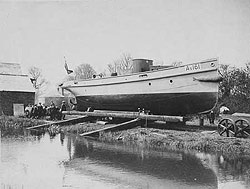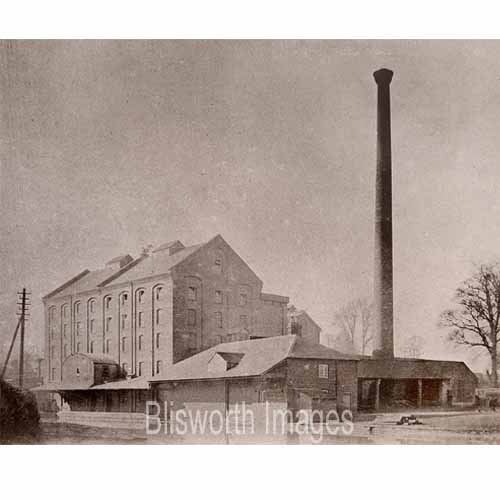We set off in the cool of 0930 and headed for the water point outside the boat pub. The plan was to be filling up with water as the museum shop opened at 1000 and we could buy some postcards etc. The plane worked well, and even better another boat arrived ready to start locking down so we had a lock buddy to share the load.
Stoke Bruerne Museum and cottages just by the top lock.
There was a shuffling about between those on the bank and those on the boat. We made fair progress meeting several boats coming up but in the heat it was nice to get to the bottom.
Chris putting his back into the windlass on the Stoke Locks.
Piper's Fancy, our lock buddies with a well rounded pair of sterns!
After the locks the canal wanders around the countryside with extensive views. We passed 'Valerie' and despite hollering as we drifted past Jaq and Les were staying put in the heat. Less looked well though. There didn't seem to be very much moving but there were quite a few moored on the side. Maybe just too hot. We got to Cosgrove and called it a day.
The very ornate bridge at Cosgrove. Nobody knows why it is so ornate.
We went for a walk round the village and passed under the canal via the horse tunnel. There are no shops or a post office here so we sought the cool of St Peter and St Paul Church. The original patrons of the church were the Priors of the Hospital of St John of Jerusalem! They can trace their Rectors from 1219.
Horse tunnel as Cosgrove.
St Peter and St Paul Church in Cosgrove.
In side there were a couple of interesting memorials. The first that caught my eye was that of Sir Robert Moorsom, June 1760 to November 1835. He was an Admiral of the Blue. It turns out he was born in Whitby and joined the RN at 17. He served in the American War of Independence, the French Revolution War and the Napoleonic Wars. He was the Captain of HMS Revenge at the Battle of Trafalgar in Admiral Collingwoods fleet. He was near the back of the line but being newly bottomed was faster than many. He has heading for the Spanish Flag Ship and on the way managed to cripple three vessels before coming up on the flagship that greatly outgunned him. Their broadside caused sevre damage and 70 crew dead and he was badly wounded too. They were in a sinking condition when saved by another couple of British vessels engaging. By good seamanship the Revenge made Gibraltar. Moorsom was set home and never went to sea again. He carried the Great Banner at Nelson's funeral and was promoted eventually to Admiral of the Blue and then became an MP and was the Surveyor General of Ordnance.
The other memorial was to Major General John Mansel, whose family lived at the Hall from 1742. He was Lt. Colonel of the 3rd Dragoon Guards. He was in charge of a group of cavalry during the French Revolutionary Wars and failed to engage the enemy. He was almost disgraced but after an enquiry it was found the message never got to him. Three days later at the siege of Landrecies in Flanders, where the British and Austrians were besieging the French, a relieving force of French attacked. The Commander, the Duke of York, had a word with Monsel to remind him of the previous event before sending him and his large force of cavalry on an outflanking charge. Apparently Mansel swore he would not come back alive. He sped off and was found after the battle well ahead of the main force with a musket shot in the head and his throat cut! One of his son's was also there and was also thought to be lost whilst trying to save his Father but was later found to be injured and captured. John Mansel died in 1794 at the Battle of Coteau ensuring his family name, and his blooded tunic and diary were kept at the Hall for many years but are now at Peterborough Museum.
One of his sons went to sea and became a Rear Admiral. Another of his sons joined the 25th Light Dragoon Guards and went on over seas service to India but unfortunately died at sea on the way back.



